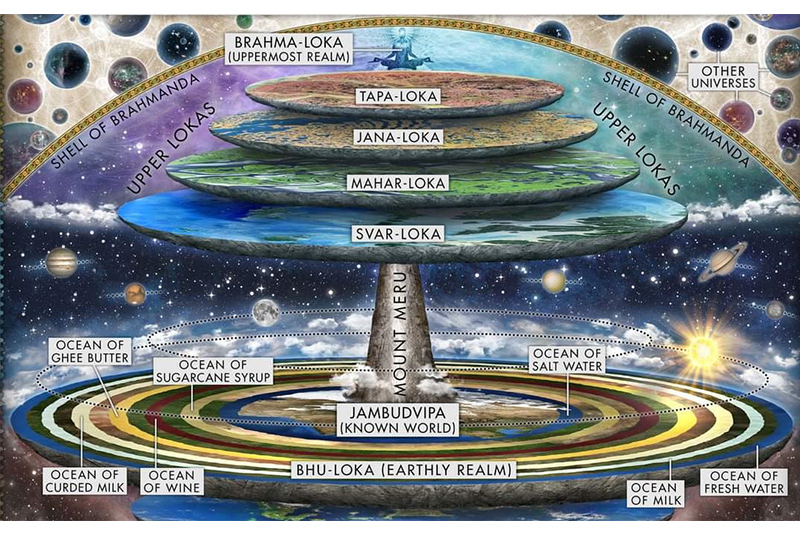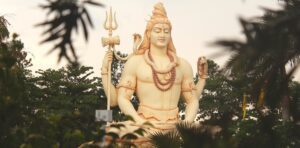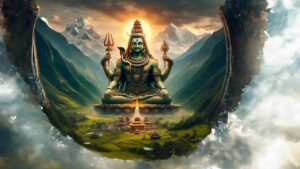Why are all Gods born in India?
Many people believe that all gods are born in India, but this idea comes from a misunderstanding of ancient texts and concepts. To truly understand this, we need to dive into the geographical and spiritual concepts described in Hindu scriptures. Short answer to this is because India was not what you think it is now.
Jambudweep: The Ancient Landmass
You must have heard Jambudweep every now and then in Hindu scriptures, especially famous in the song Hum Katha Sunate Ram Sakal Gun Dhaam Ki sung by Luv Kush for Lord Rama.
हम कथा सुनाते राम सकल गुणधाम की, ये रामायण है पुण्य कथा श्री राम की
जम्बुद्विपे भरत खंडे आर्यावर्ते भारतवर्षे, एक नगरी है विख्यात अयोध्या नाम की
The idea of gods being born in India can be traced back to the concept of Jambudweep. This term appears in several ancient texts, and its meaning is more complex than it first appears.
Jambudweep is described in different ways by scholars. Some see it as the Indian subcontinent, while others view it as the Asian continent. However, the ancient texts provide a broader and more fascinating picture.
Markandeya Purana describes Jambudweep as being depressed above and below and broad in the middle, resembling a globe.
जम्बूद्वीपस्य मध्यभागः प्रोक्तो गद्यसन्निभः।
ऊर्ध्वाधोविनतश्चैव मध्योऽयं बृहदायतः॥
The central part of Jambudweep is described as being like a globe, depressed above and below, and broad in the middle.
Similarly, Srimad Bhagavatam explains that night prevails on one side of Jambudweep when it is day on the other, and the sun sets on one side when it rises on the opposite side. This suggests a spherical landmass, much like our Earth.
यदा भगवतो ह्येषा विश्रुतिः कर्मवर्त्मसु।
वृत्तद्वयापेक्षया रात्रिर्दिवा च युगपद्॥
When it is night on one side of Jambudweep, it is day on the other side, and when the sun sets on one side, it rises on the opposite side. This clearly indicates a spherical landmass.
In the Mahabharata, the universe is described as a series of shells divided by an earth plane called Bhu-mandala, with Jambudweep at its center. Jain and Buddhist cosmologies also place Jambudweep at the center of the universe where humans reside.
Bharat Varsha, or India, is described as just one of the nine divisions of Jambudweep in various texts. From these descriptions, it becomes clear that Jambudweep is not just India or even Asia but the entire planet.
पृथिव्या रूपं कथयेत् सकलं तद्विदुर्मनीषिणः।
सप्तद्वीपवतीं पृथ्वीं द्वीपे द्वीपे तु यः क्रमः॥
तत्र द्वीपे महान् जम्बूः शाल्मलः कुषद्व द्विजः।
गवांश्च समुद्रं च तथैव च सस्यवर्द्धनम्॥
The wise describe the complete form of the Earth, which is known to have seven islands (dweepas). Among these islands, Jambudweep is prominent, along with Shalmala and Kusha. It is also known for its bountiful produce and surrounded by oceans.
The Supercontinent Theory
Interestingly, geological studies show that there was indeed a time when all the land on Earth was joined to form a single landmass called a supercontinent. Scientists call this supercontinent Pangaea. This idea aligns well with the ancient descriptions of Jambudweep, suggesting that these texts might be referring to an actual historical fact rather than just a poetic reference.
Spiritual Concepts: Bhulok and Bharat

In Hindu cosmology, the universe is divided into several lokas or worlds. These include:
1. Bhulok: The earthly realm where humans live.
2. Bhuvarlok: The realm of semi-divine beings.
3. Svarlok: The heaven of Indra and the gods.
4. Maharlok: The realm of great sages.
5. Janalok: The abode of Brahma’s children.
6. Taparlok: The realm of ascetics.
7. Satyalok: The highest realm, the abode of Brahma.
Bharat or Bharat Varsha is one part of Bhulok. It is the land where dharma is most emphasised, and it is considered sacred because many divine events and incarnations have occurred here.
The Land of Rishis
Gods take birth mainly in India because of the tapasya and karmas of the great rishis. India is often referred to as Tapobhoomi. The intense spiritual practices and devotion of these sages create a divine environment that results in gods being born here.
ऋषयो मनवश्चैव सप्तैते ब्रह्मणः सुताः।
कुर्वन्त्यनुग्रहं पृथ्व्यां भारतस्य विशेषतः॥
The rishis and Manus, the seven sons of Brahma, bestow their blessings upon the Earth, especially in Bharat (India).
ऋषिभिः सप्तभिः पुण्यैः कृतं भारत पावनम्।
तपःस्वाध्यायनिरतैः सत्यधर्मपरायणैः॥
Bharata (India) has been made sacred by the seven holy rishis, who are devoted to penance, self-study, and the principles of truth and dharma.
अथर्वाङ्गिरसः सप्त ऋषयः प्रजापतेः। भूता भूमिं च भारतं तपसा शुद्धमानसाः॥
The seven sages of Atharva and Angiras, the progeny of Prajapati, have sanctified the land of Bharat with their penance and pure minds.
महर्षीणां भारतं कर्मभूमिः ॥
India is the land of action for the great sages.
Temples Around the World
If you think Hinduism was only in India, think again. Many ancient Hindu temples around the world reflect the global spread of this rich tradition.
Southeast Asia:
• Cambodia: Angkor Wat, built in the 12th century, was originally a Hindu temple dedicated to Vishnu. Bayon Temple also showcases Hindu elements.
• Indonesia: The Prambanan Temple Complex, from the 9th century, is dedicated to Brahma, Vishnu, and Shiva. Bali still has many active Hindu temples.
• Thailand: Ayutthaya and Wat Arun feature Hindu influences.
• Malaysia: Batu Caves and Sri Mahamariamman Temple are significant Hindu sites.
• Vietnam: My Son Temples, built by the Champa civilization, honor Shiva.
Central Asia:
• Afghanistan: Bamiyan Caves and Kandahar have evidence of ancient Hindu presence.
• Pakistan: Hinglaj Mata Temple and Katas Raj Temples are important Hindu sites.
South Asia:
• Sri Lanka: Koneswaram Temple is dedicated to Shiva.
• Nepal: Pashupatinath Temple is a major pilgrimage site for Shiva devotees.
• Bangladesh: Kantaji Temple and Mahasthangarh show ancient Hindu influence.
Indian Subcontinent:
• India: Cities like Varanasi and Hampi are filled with historical Hindu temples.
Modern Global Spread:
• Fiji: The Sri Siva Subramaniya Temple is the largest Hindu temple in the Southern Hemisphere.
• Trinidad and Tobago: The Mandir and Hanuman Murti show the presence of Hinduism.
• Guyana: The Ramchandra Mandir serves the Hindu community.
• South Africa: Shree Sanathan Hindu Union reflects the history of Hinduism in the region.
A Global Perspective
The concept of gods being born in India is deeply rooted in the ancient understanding of Jambudweep, a landmass that once represented the entire Earth. The spiritual and geographical teachings of Hindu scriptures show that the divine presence is not confined to any single region but spans the globe. The ancient temples around the world stand as a testament to the widespread influence of Hinduism. This rich tradition continues to thrive, reminding us of its profound and far-reaching heritage.









Kaal Bhairav Ashtakam